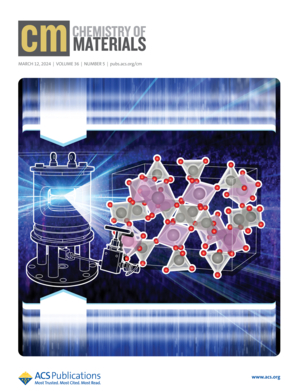
La température ne l'affecte pas mais la pression le transforme
The temperature doesn't bother it, but the pressure does.
Vittoria Pischedda, Denis Machon et Max Gerin (équipe Energie) en collaboration avec des collègues d’Australie et d’Espagne ont publié un article intitulé "Pressure behavior of the zero thermal expansion material Sc1.5Al0.5W3O12" dans la revue Chemistry of Materials. Ce travail a été selectionné pour la couverture de la revue.
Vittoria Pischedda, Denis Machon and Max Gerin (Energy team), in collaboration with Australian and Spanish colleagues, have published a paper entitled "Pressure behavior of the zero thermal expansion material Sc1.5Al0.5W3O12" in the journal Chemistry of Materials. The article was selected for the cover.
Les matériaux à dilatation thermique nulle ont la capacité unique de résister aux chocs thermiques dans une large gamme de température, ce qui leur permet d'être utilisés comme composants dans des appareils de haute précision. Le matériau étudié dans ce travail présente une dilatation thermique nulle sur la plus grande plage de température rapportée à ce jour, de 4 à 1400 K. En revanche, son comportement sous pression est très varié. En combinant des données expérimentales et des simulations, les auteurs ont montré dans ce travail qu'en appliquant une pression, le matériau subit diverses transitions structurelles jusqu'à l'amorphisation à environ 4 GPa. Ce travail démontre l'importance de comprendre le comportement sous pression des matériaux à expansion thermique nulle, car les changements de pression ont un impact plus important sur le volume cristallographique et les propriétés associées que la température.
Zero thermal expansion materials have the unique ability to resist thermal shock over a wide temperature range, enabling them to be used as components in high-precision devices. The material studied in this work exhibits zero thermal expansion over the widest temperature range reported to date, from 4 to 1400 K. On the other hand, its behavior under pressure is highly varied. In this work, the authors, by combining experimental data and simulations, have shown that with the application of pressure, the material undergoes various structural transitions up to amorphization at around 4 GPa. This work demonstrates the importance of understanding the behavior of zero-thermal-expansion materials under pressure, as changes in pressure have a greater impact on crystallographic volume and associated properties than temperature.


















